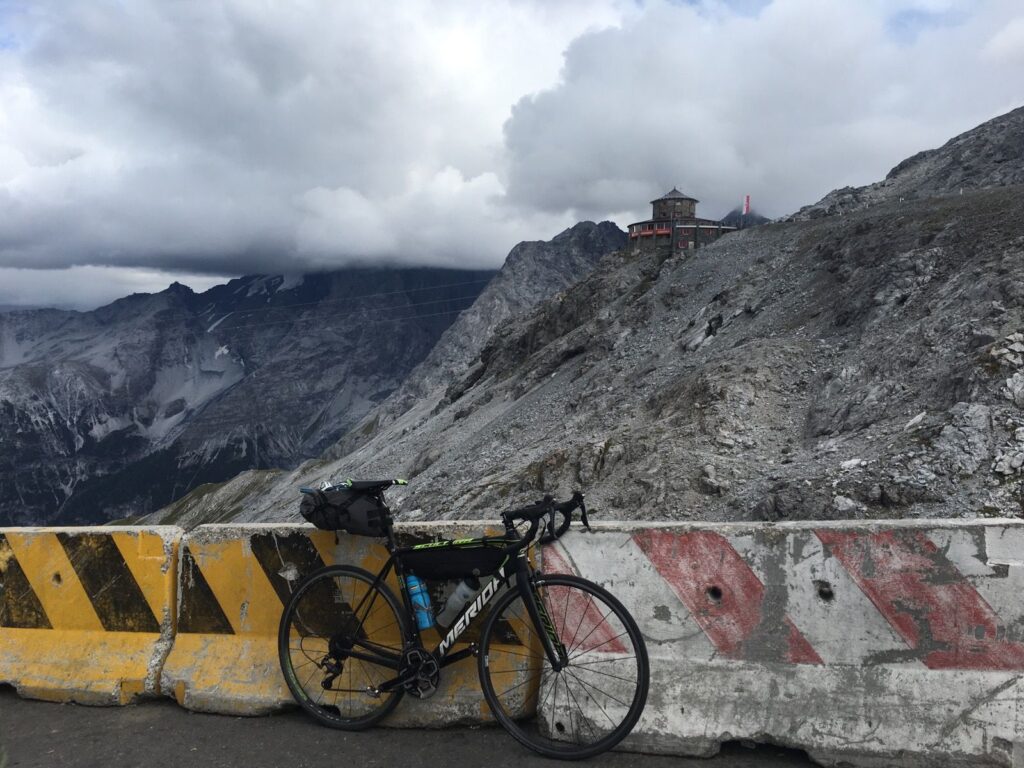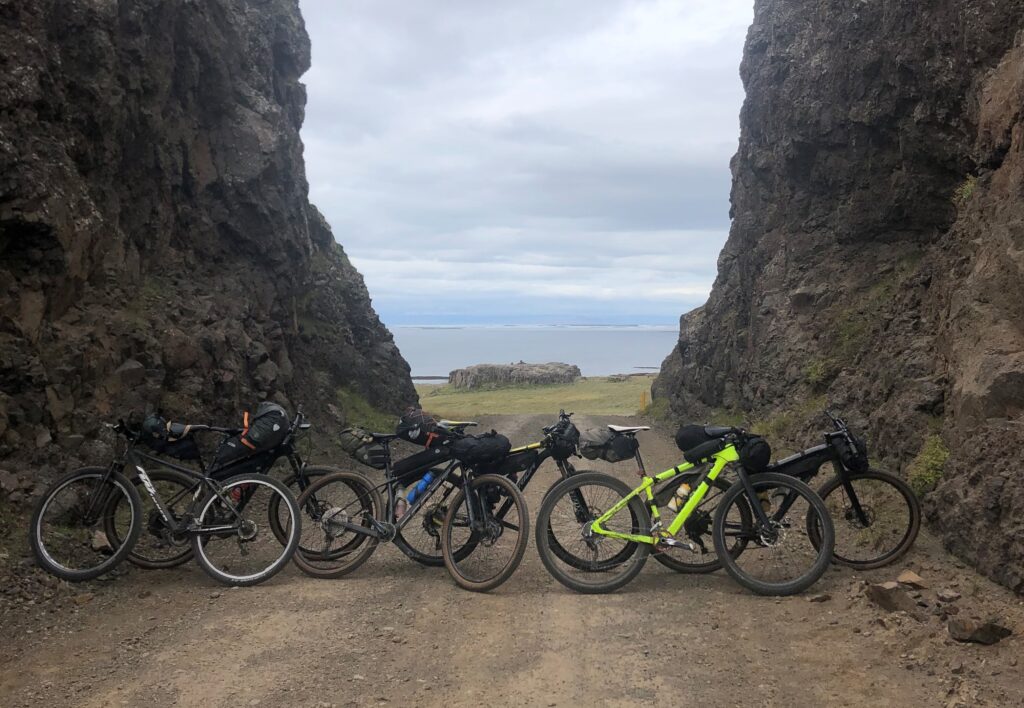Bike setup
Preparing your next bike packing adventure
When going on a bike packing trip, carefully consider your bike setup. Your storage space is limited so only pack essentials. For each trip this is different, depending on the country, roads, weather etc. Download your bikepacking guide here.

Finding the Perfect Bicycle for Your Cycling Adventure
When you’re getting ready for a cycling trip, the first big decision is picking the right bike. Each type has its pros and cons. Take the Mountain Bike (MTB), for example. It’s super flexible and can handle all sorts of terrains. But, it can be tougher for covering long distances because it’s a bit more challenging to ride.
On the other hand, there’s the Racing Bike. It’s fantastic for smooth roads and covering lots of ground. The downside? It’s not very flexible when you want to change your route on the fly.
Now, the Gravel Bike sits in the middle. It gives you some of the flexibility of a mountain bike and the efficiency of a racing bike. It’s like the perfect balance—great for exploring different terrains and still handling long rides without a hitch.
So, when it comes to choosing your bike, think about where you want to go and how you like to ride. Whether it’s the adaptable MTB, the speedy Racing Bike, or the versatile Gravel Bike, each one brings its own flavor to your cycling adventure.

Choosing the Right Bikepacking Storage Solutions
When it comes to carrying your gear during a bikepacking adventure, the choices you make can significantly impact both comfort and accessibility. Here are some options to consider:
1. Saddle Bag – A Must-Have:
- Advantages: Provides a lot of storage, and it’s positioned in a way that doesn’t affect your riding posture.
- Preference: Opt for a saddle bag with a higher capacity for more storage space.
2. Frame Bag – Always Useful:
- Advantages: Easily accessible while riding, making it convenient to grab essentials on the go.
- Preference: Choose a frame bag that fits seamlessly with your bike’s frame for a secure and streamlined setup.
3. Front Bag – Spacious but Considerations:
- Advantages: Offers a lot of space, but accessibility and aerodynamics can be a concern.
- Consideration: Use it for items you won’t need frequently while riding, maximizing its storage potential.
4. Backpack – Use Sparingly:
- Advantages: Convenient for carrying smaller items, but it can strain your back during long rides.
- Preference: If using a backpack, opt for one specifically designed for cycling, or consider a hydration pack like a CamelBak to stay hydrated on the go.
5. Other smaller bags – Optional:
- Only necessary if not enough space in other bags.
- Reminder: Travel light
Ultimately, the key is to find a balance between storage needs, accessibility, and comfort. Tailor your gear setup to suit your preferences and the demands of your journey, ensuring a seamless and enjoyable bikepacking experience.

Packing Precision
Navigating the essentials versus the unnecessary can make or break a bikepacking adventure. From basic necessities like clothing and toiletries to the more intricate realm of electronics and spare supplies, efficiency in packing is key.
In the end, the goal is to maximize efficiency while minimizing bulk. By curating your essentials and utilizing smart packing strategies, you can embark on your bikepacking journey with confidence and ease. You can download a basic guideline below. Should you need further assistance, we’re just a message away!